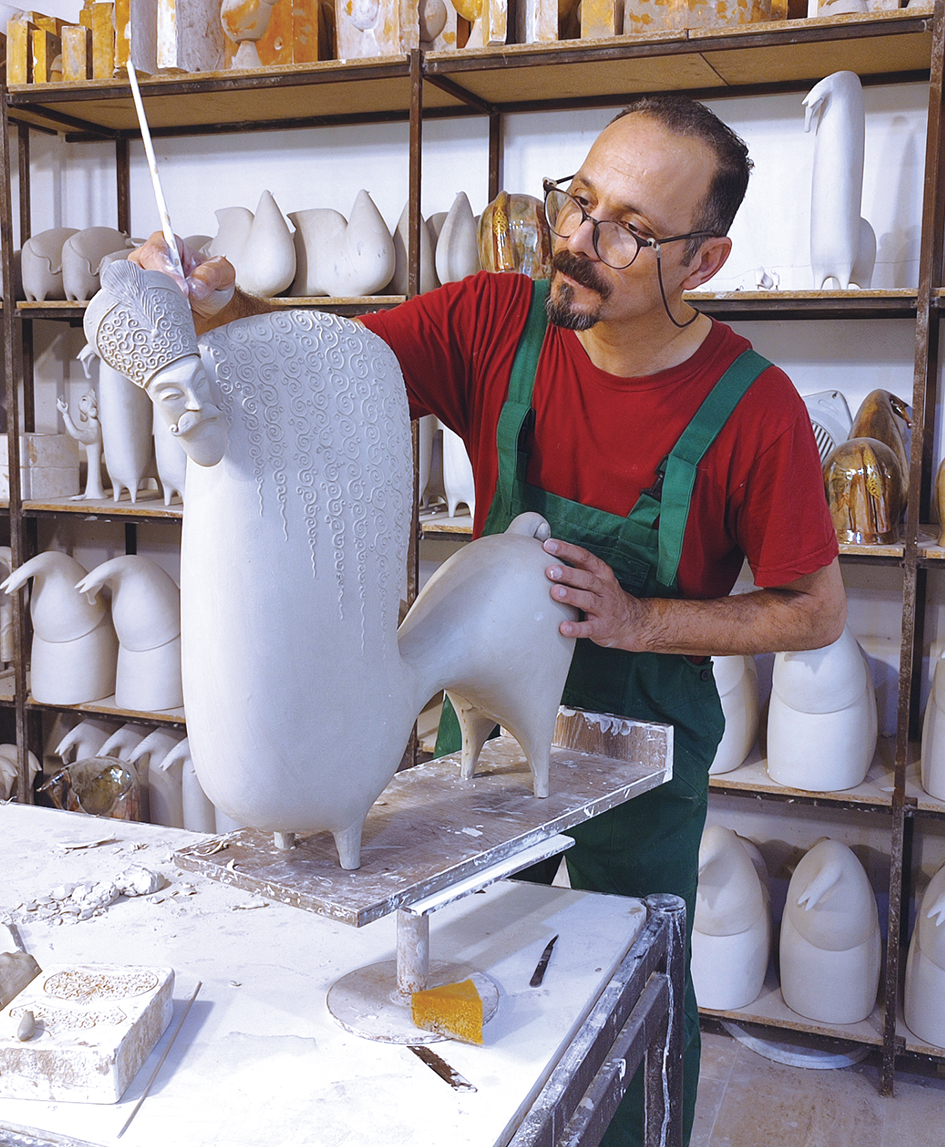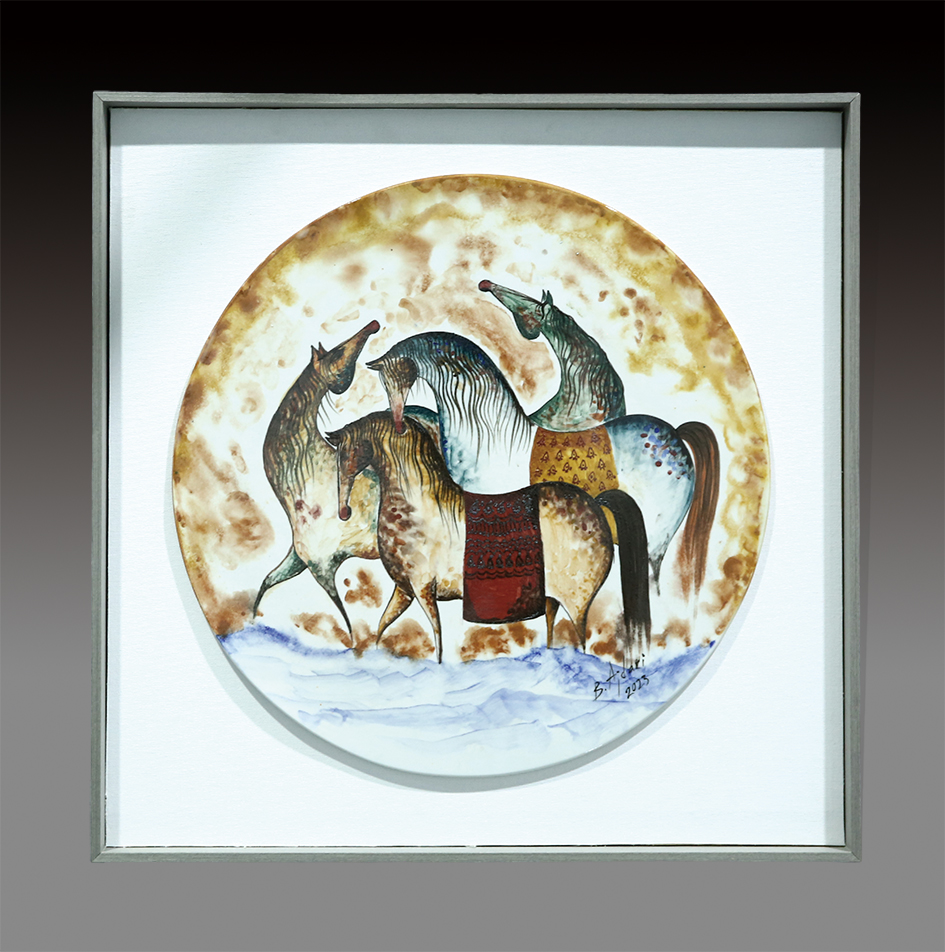
Behzad Ajdari is an Iranian ceramist who has been teaching and creating ceramics for many years. He has served as the president of the Association of Ceramic Artists of Iran for more than ten years and has won numerous national and international awards.

His ceramic panel,My Dreams are Tied in the Manes, stands in silence and narrates humanity’s eternal spiritual allegory. This 48-centimeter diameter ceramic piece, featuring four distinctively posed horses as its central image, seamlessly integrates the delicate brushwork of Persian miniature painting with the expressive power of contemporary ceramics. In the interplay of porcelain and glaze, it constructs a transcendent spiritual totem that surpasses the boundaries of time and space.
1.Deconstructing and Reconstructing the Ceramic Language
In this piece, the ceramist demonstrates a profound understanding of ceramic materials. He skillfully leverages the high whiteness, delicate texture, and high refractoriness of porcelain clay, along with the fluidity of glazes. Through firing techniques, cobalt blue naturally diffuses across the plate’s surface, creating a gradient color of dawn breaking over a desert landscape. The ceramist pushes beyond the traditional flatness of ceramic art. Through varying relief techniques, the muscular contours of the four horses create subtle undulations on the surface of the plate. This piece is both a tribute to anatomical realism and a tangible expression of the uplifting nature of dreams.
Through the contrast between warm and cool tones and the interplay of solid and void forms, each horse maintains its individuality while visually linking to the others in a continuous, cyclical arrangement. This structure echoes the rhythmic couplets of Masnavi, a classical form of Persian poetry, transforming the piece into a three-dimensional poem that can be touched and felt.
2.Reflections on Cultural Exchange
Within a globalized artistic landscape, this piece exemplifies the unique tension in contemporary Iranian art. Ajdari transforms Islamic artistic constraints into creative strengths by depicting stylized, abstract horses. He skillfully avoids the traditional constraints of idolatry while creatively tapping the expressive potential of animal imagery. This innovative approach holds paradigm-shifting significance in modern Islamic art, demonstrating the potential for cultural traditions to be regenerated in a contemporary context.
For viewers, My Dreams are Tied in the Manes offers insights beyond art. In an era of information overload, the four horses in the artwork embody different states of being, mirroring the four attitudes humans adopt when facing their dreams: the fervor of awakening, the perseverance of pursuit, the depth of reflection, and the tranquility of return. As one’s fingertips trace the varying reliefs on the ceramic surface, they do not merely feel the warmth of the clay—they touch the spiritual imprints left by generations of dream-chasers throughout history.
Ultimately, this piece achieves a perfect balance between materiality and spirituality. The fragility of porcelain clay and the resilience of dreams are refined in the kiln’s fire, while the brilliance of glazes and the depth of philosophy merge on the surface of the plate. Ajdari’s four horses serve as a symbolic totem, paying homage to Iran’s millennia-old cultural heritage while offering a contemporary interpretation of humanity’s eternal pursuit of the spiritual. As we gaze upon this work, we see a visual marvel shaped by the ceramist’s hands and a civilization’s epic written in the language of dreams.